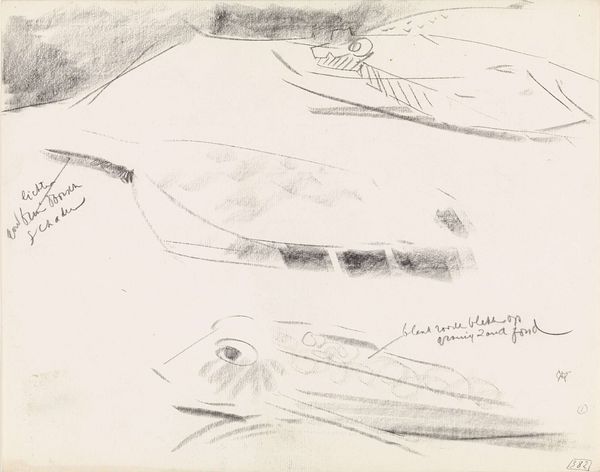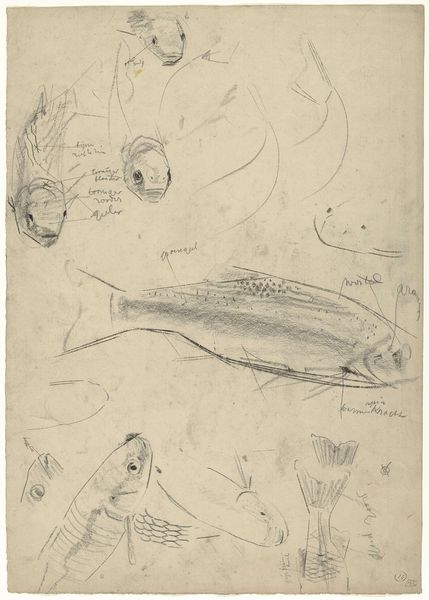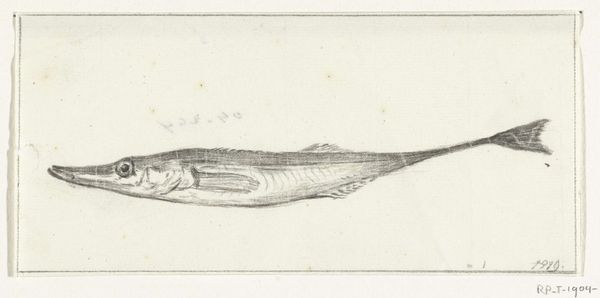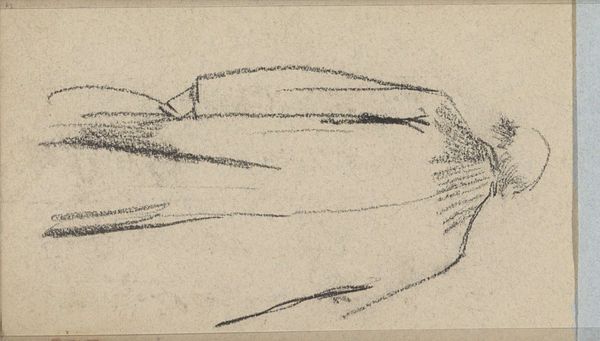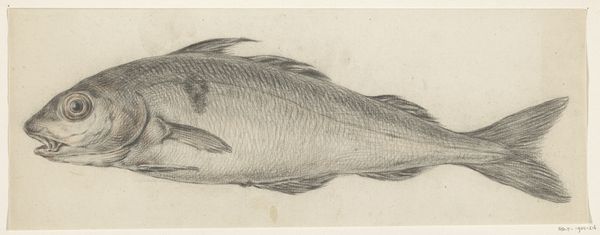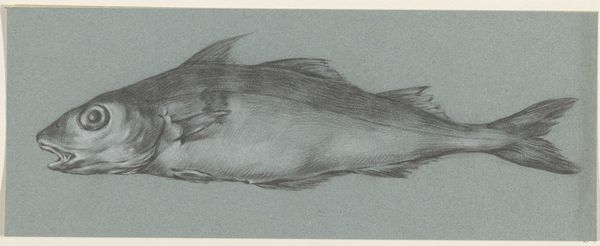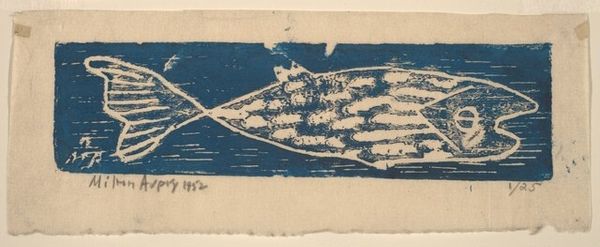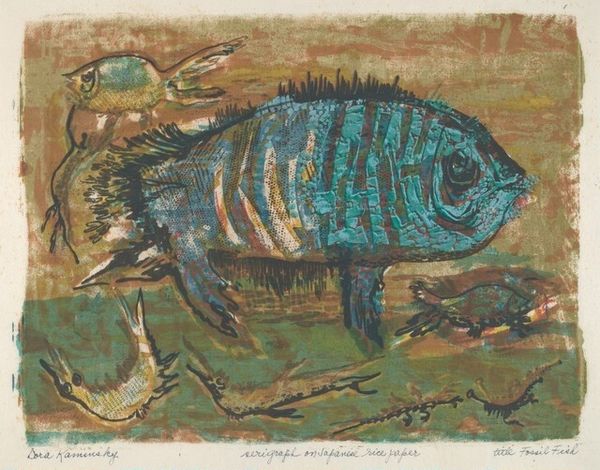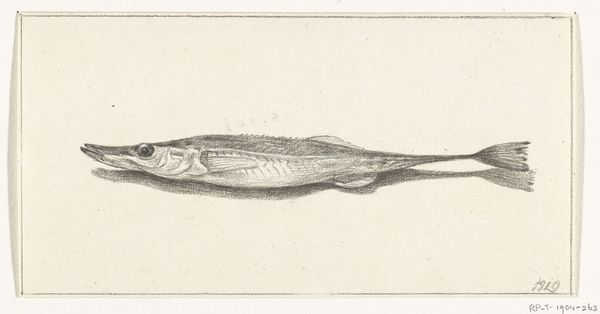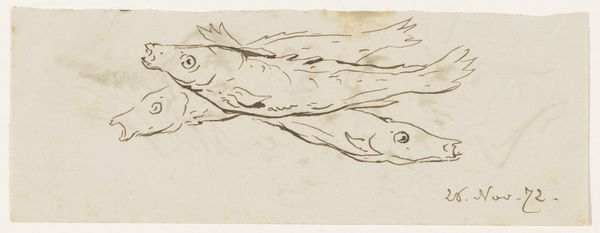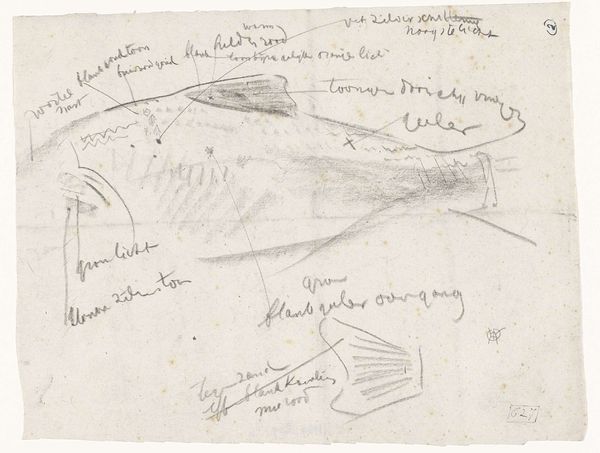
Copyright: Public domain China
Curator: We’re looking at "Golden Yellow Corn" by Sanyu, created in 1929 using watercolor. Editor: What strikes me first is how light and airy it feels. The corn seems to float against the pale background, very simply rendered with translucent layers. Curator: Yes, the simplicity is deceptive. It’s important to remember Sanyu's background, straddling the traditions of Chinese calligraphy and Western modernism. Think about how food staples and still lifes gain meaning when displayed during ritual offerings to ancestors, or in family environments; also consider how the "plein-air" medium emphasizes not just the final artwork but also the artist’s practice and interaction with this object. Editor: From a purely formal point of view, look at how the yellow is intensified by the green-blue outlines and the husks. It’s such an elemental composition, reduced to its core components. The corn is so immediate, almost tangible. The choice of watercolour and 'plein-air' painting gives a great impression. Curator: It also reflects on how labor-intensive farming is for crops such as this one and contrasts this with Sanyu's seemingly rapid execution and gestural aesthetic. There’s an apparent contrast between the organic, vital object and the manufactured context it is now placed within. Editor: True, but despite that potential reading, what resonates with me is its immediacy and grace, and the way its shape and chromatic scale plays within. Curator: I see your point. Both those impressions and underlying meanings add depth, demonstrating art’s inextricable link to its socio-cultural landscape. Editor: Indeed, looking closely reveals that interplay. Thank you for guiding us!
Comments
No comments
Be the first to comment and join the conversation on the ultimate creative platform.

